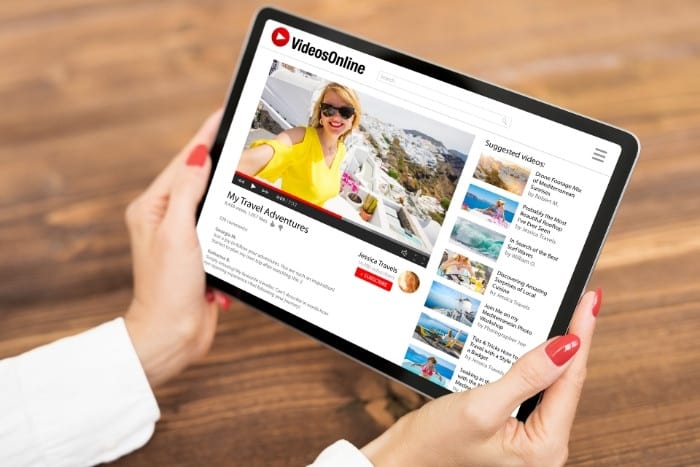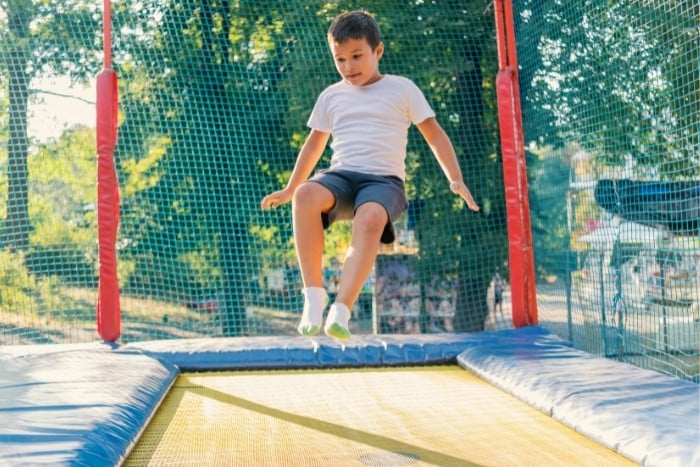If you’ve never been snowboarding before and want to get a head start before you head up a mountain to try it for real, it’s natural to want to practice at home before you go.
Unfortunately, you’ll find it extremely difficult trying to learn to snowboard at home without real snow. However, online videos are a good place to start for getting to grips with the basic theory behind snowboarding, and there are some exercises you can do to prepare your body for the slopes.
Today, we’ll briefly examine the barriers to learning to snowboard at home before taking a deeper dive into the techniques and exercises you can do that will accelerate your progression when you finally make it out to the mountain.
Is It Possible To Learn To Snowboard At Home?
The truth is, when it comes to learning to snowboard, there’s just no substitute for the real deal.
Unless you have a dry slope in your backyard (and if you can afford one of those, you could probably afford your own chalet on the slopes), learning to snowboard at home is almost impossible.
Snowboarding isn’t the same as skateboarding or longboarding, where you can find yourself on a downhill slope or flat surface and let rip; it’s more akin to surfing in that the riding surface (snow, in this case) is an integral part of how the board actually works.
Unless you have a massive yard with a big slope and you live somewhere that experiences hefty winter snow, you will be extremely limited in what you can pick up at home.
While you may not be able to learn how to snowboard at home, that doesn’t mean that there aren’t ways you can prepare your mind and body for when you do make it out to the mountain.
Below, we’ve covered some of the at-home training that even the pros will get stuck into during the off-season.
1. Watch YouTube Videos
As you’re probably aware, YouTube has an unbelievable wealth of instructional videos for pretty much every sport and hobby under the sun, and you’ll find no shortage of snowboarding content.
Whether you’ve never set foot on a snowboard before and are trying to prepare for your first ride or are a seasoned rider wanting to take your skills to the next level, you’re sure to find relevant training videos.
The best part about YouTube is that it’s much easier to visualize specific techniques and understand what the demonstrator is showing you in a way that is much harder to achieve if you’re only reading instructions.
You can even reduce the playback speed of videos to make it easier to break down exactly what’s happening on-screen. Watching YouTube is also an amazing way to get hyped for your next trip.
When I’m thinking about planning a snowboarding vacation or have one coming up, I spend the weeks leading up to it watching videos of the pros shredding and trying to think about what skills, tricks, and techniques I want to try and master the next time I’m on the mountain.

2. Increase Your Stamina
Anyone who’s been snowboarding before will tell you that as easy as it might look, it’s a hell of a workout.
You’re constantly using muscles you never thought you had, you’re pulling yourself out of deep snow if you bail, you might be hiking through the backcountry to find new lines to ride, and if you’re staying in a resort, you’ll probably find yourself trekking up a few hills in your downtime.
Simply put, the better your stamina, the more fun you’ll have because you’ll be able to ride for longer before getting tired.
It’s also worth mentioning that if you get too worn out, you’re more likely to make a mistake that could lead to a trip-ending injury (or worse, if you’re unlucky).
At home, you can use cardiovascular exercises to increase your fitness and boost your stamina.
Running and cycling are excellent ways to get mountain fit, and my personal preference is swimming, as it’s a low-resistance way to build muscle while giving your lungs and heart an unparalleled workout.
3. Work On Your Lower Body Strength
Believe it or not, most pro snowboarders are pretty jacked under those extra baggy ski pants. They are athletes, after all. For snowboarding, as with skiing, lower body strength is vital.
You’ll mostly be using your calves, thighs, hamstrings, quads, and glutes, and you’ll also want to ensure you’ve got sufficient lower back strength to prevent injury.
You don’t have to be a gym rat to know that’s basically your entire lower body.
If you’ve access to gym equipment, deadlifts are an amazing way to work out your glutes, hamstrings, and lower back, and squats are an excellent leg workout that will help strengthen your ankles.
If you don’t have access to gym equipment, there are still plenty of exercises you can do at home to build lower body strength.
Unweighted squats are still worth doing, and lunges work almost every part of the leg and strengthen your hips. Ultimately, you’ll find a workout regime that’s best for you.
4. Strengthen Your Core
Arguably the most important type of strength you need for snowboarding, your core plays a critical part in keeping your balance on your board and, paired with your lower back, will help prevent injury on the slopes.
As a newbie, you’ll also find yourself standing up from a sitting position very frequently, and you’ll find it a lot less tiring and frustrating if you have decent core strength.
At home, we recommend sit-ups, crunches, and planks to build the necessary core strength. Pilates and yoga are also superb core-building exercises that shouldn’t be overlooked.
It’s also worth buying yourself a balance board; as the name suggests, you’ll find your overall balance improving while giving yourself a great core workout.
5. Practice Your Aerial Awareness
If you’re a total beginner to snowboarding, you may want to skip over this one, but if you’re familiar with the basics and starting to dip into the freestyle aspect of the sport, then you should start getting familiar with the feeling of being in the air.
For this, you’ll need a trampoline. Trampolines are a great way to begin getting comfortable with the sensation of being airborne.
You’ll be able to get a feel for how long it takes you to complete specific rotations and even progress to backflips and frontflips.
Initially, your situational awareness while rotating in the air will leave much to be desired but the more you practice, the more natural it will feel, giving you the necessary time to focus on important things like, “How am I going to stick the landing?”

Conclusion
As we stated at the beginning of this article, you’re not going to be able to practice the majority of the primary snowboarding techniques at home unless you have your own ski slope; there’s just no real substitute for a snow-covered mountain.
Fortunately, you can still do plenty of things to get ready for your next trip, regardless of how much snowboarding experience you have.
Even if you’ve got years of riding under your belt, getting prepared at home will ultimately lead to a safer and more enjoyable experience when you get out to the hill.
